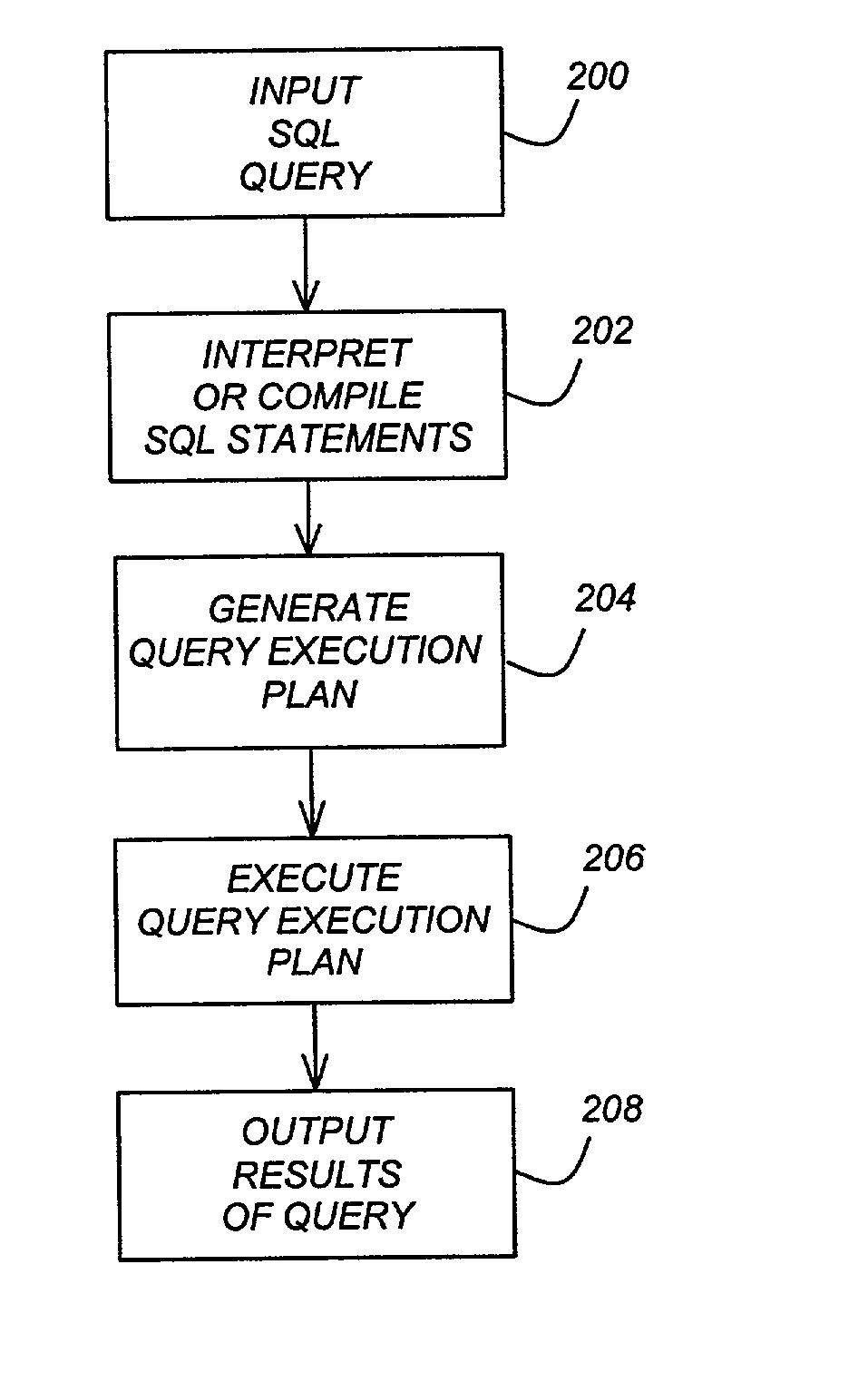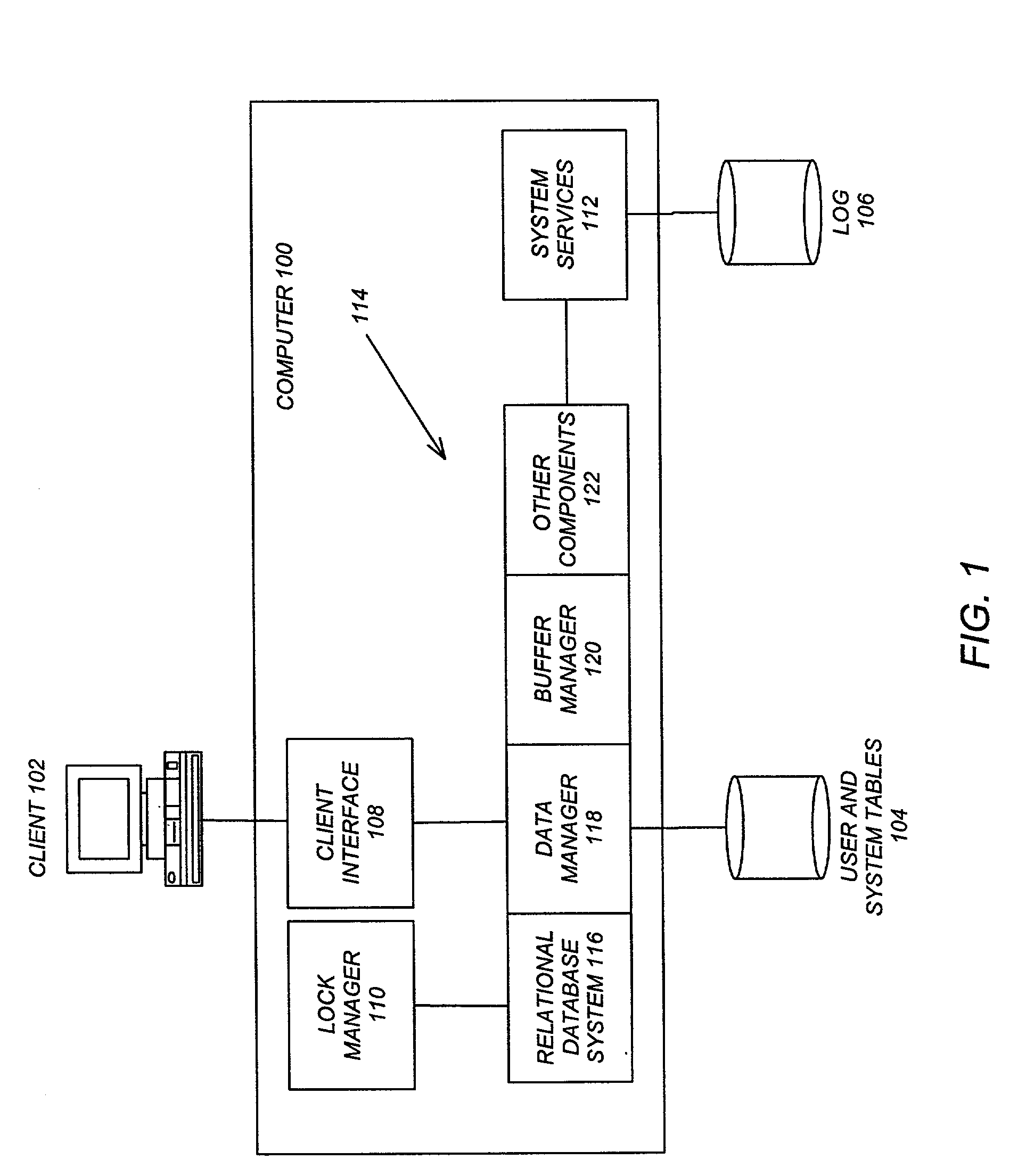Outerjoin and antijoin reordering using extended eligibility lists
a technology of anti-joining and eligibility lists, applied in the field of database management systems, can solve the problems of limiting the application of the technique in commercial systems, complicated change of evaluation order, and limitations in approach
- Summary
- Abstract
- Description
- Claims
- Application Information
AI Technical Summary
Benefits of technology
Problems solved by technology
Method used
Image
Examples
Embodiment Construction
.1, the two outerjoins are associative. So the EELs of the two join predicates are the same as the NELs. Thus, join order ((R,S),T) is valid. If R is much smaller than the other two tables, this join order could be much cheaper than the original order. In Example 4.2, since none of the inner joins can be evaluated before the outerjoin, the outerjoin predicate will include all four tables in its EEL.
5 11 Example 4.1 : R p rs ( S p st T ) R S T companion set {R} {S} {T} NEL EEL P.sub.rs {R, S} {R, S} P.sub.st {S, T} {S, T}
[0133] Additional valid join order: ((R, S), T)
6 12 Example 4.2 : R p rs ( ( S p st T ) p tu U ) R S T U companion set {R} {S} {T} {S, T, U} NEL EEL P.sub.rs {R, S} {R, S} P.sub.st {S, T} {S, T} P.sub.tu {T, U} {T, U} Additional valid join orders: (R, (S, (T, U)))
[0134] 4.2 Reordering Outerjoins, Antijoins, and Inner Joins
[0135] This section illustrates how to set the EELs properly when there are outerjoins, antijoins, and inner joins in the operator tree. Antijoins ...
PUM
 Login to View More
Login to View More Abstract
Description
Claims
Application Information
 Login to View More
Login to View More - R&D
- Intellectual Property
- Life Sciences
- Materials
- Tech Scout
- Unparalleled Data Quality
- Higher Quality Content
- 60% Fewer Hallucinations
Browse by: Latest US Patents, China's latest patents, Technical Efficacy Thesaurus, Application Domain, Technology Topic, Popular Technical Reports.
© 2025 PatSnap. All rights reserved.Legal|Privacy policy|Modern Slavery Act Transparency Statement|Sitemap|About US| Contact US: help@patsnap.com



